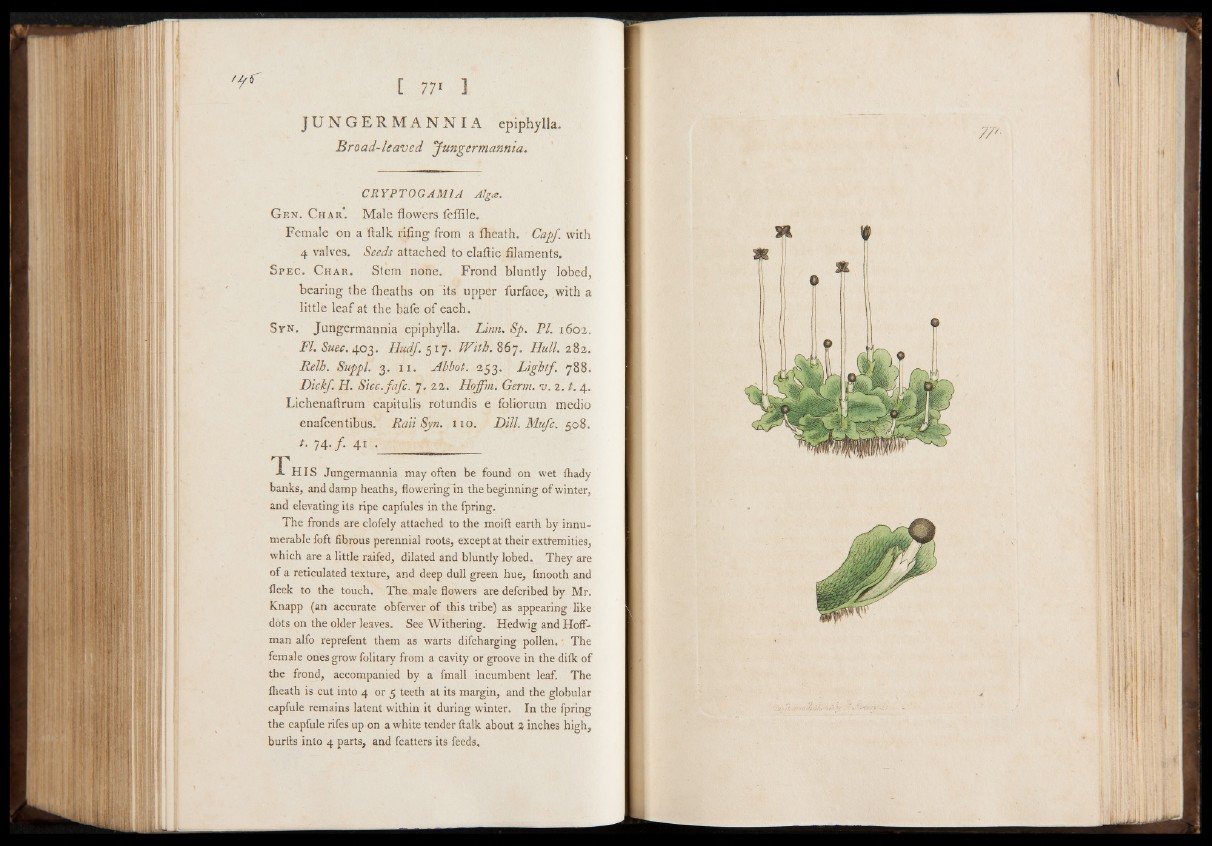
J U N G E RMA N N I A epiphylla.
Broad-leaved Jungermannia.
CRYPT0GAM1A Alg*.
Gen. Char. Male flowers feffile.
F em a le o n a ftalk. r i£ n g from a fh e a th . Ca p f w ith
4 valves. Seeds a tta c h e d to e la ftic filam e n ts .
Spec. Char. S tem n o n e . F r o n d b lu n tly lo b e d ,
b e a r in g th e fh e a th s o n its u p p e r fu rfa c e , w ith a
little le a f a t th e b a fe o f e a c h .
Syn. J u n g e rm a n n ia e p ip h y lla . Linn. Sp. PI. 1 6 0 2 .
FI. Suec. 4 0 3 . Hudf. 5 1 7 . W ith . 8 6 7 . Hull. 2 8 2 .
Relh. Suppl. 3 . 1 1 . Abbot. 2 5 3 . L igh tf. 7 8 8 .
Dickf. H. Sicc.fafc. 7 . 2 2 . Hoffm. Germ. v . 2. t. 4 .
L ic h e n a f trum c a p itu lis r o tu n d is e fo lio rum m e d io
e n a f c e n tib u s . Ra ii Syn. n o . D ill. Mufc. 3 0 8 .
4 74 41 ■
T-S- H IS Jungermannia may often be found on wet fhady
banks, and damp heaths, flowering in the beginning of winter,
and elevating its ripe capfules in the fpring.
The fronds are clofely attached to the moift earth by innumerable
foft fibrous perennial roots, except at their exttemities,
which are a little raifed, dilated and bluntly lobed. They are
of a reticulated texture, and deep dull green hue, fmooth and
fleek to the touch. The male flowers are defcribed by Mr.
Knapp (an accurate obferver of this tribe) as appearing like
dots on the older leaves. See Withering. Hedwig and Hoffman
alfo reprefent them as warts difcharging pollen. • The
female ones grow folitary from a cavity or groove in the difk of
the frond, accompanied by a fmall incumbent leaf. The
fheath is cut into 4 or 5 teeth at its margin, and the globular
capfule remains latent within it during winter. In the fpring
the capfule rifes up on a white tender ftalk about 2 inches high,
burfts into 4 parts, and fcatters its feeds.
V